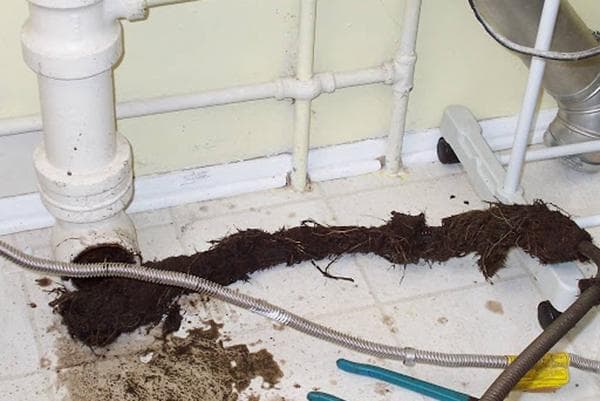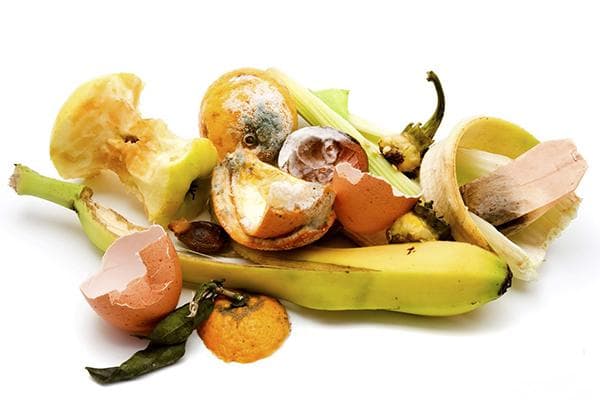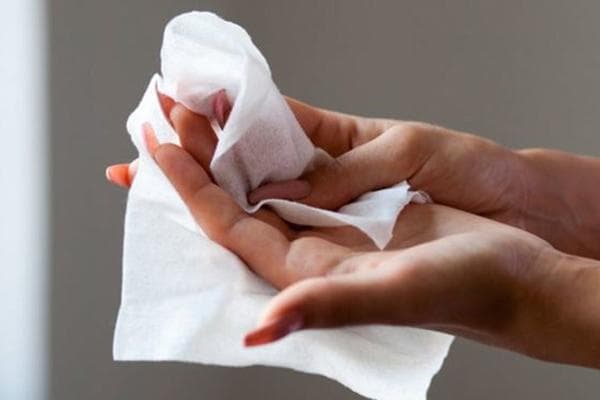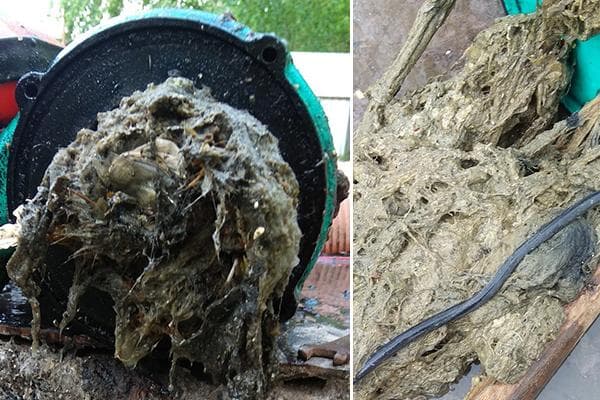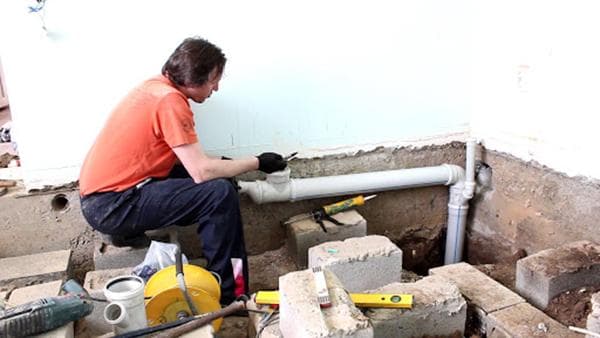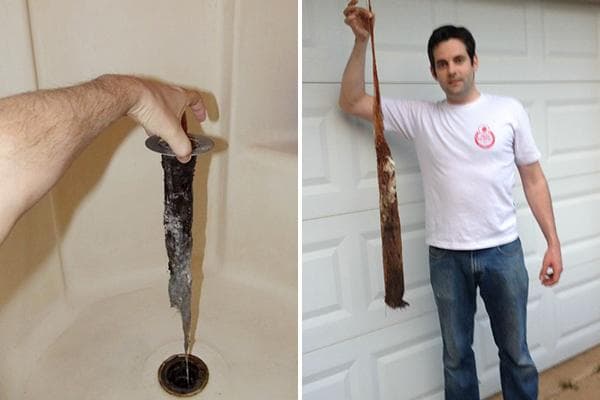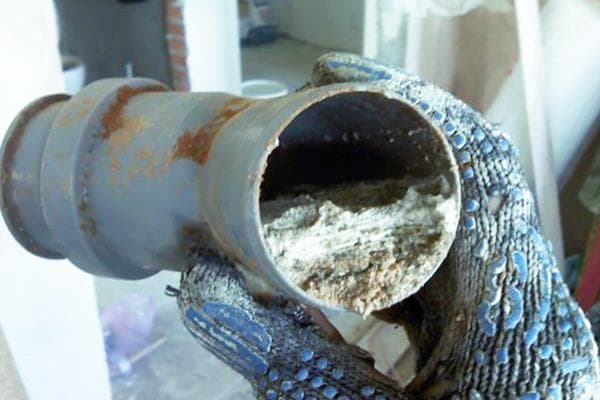5 common causes of sewer blockages - a plumber's story
Content:
Having moved to live in a private house, people often have no idea what difficulties they will face. The causes of sewer blockages here are very specific, and you have to solve all the difficulties yourself.
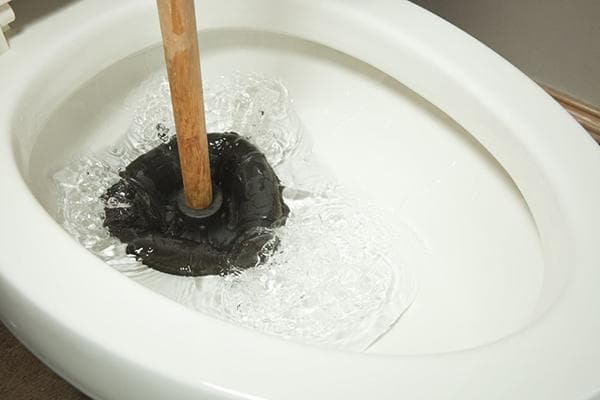
Background
Living in a private house, people are willing to put up with various inconveniences, but not the lack of a modern bathroom. So our family chose a house where sewerage was installed. But after 2 months, the water in the toilet became treacherously frozen.
“Just think, there’s a blockage,” I thought and cheerfully grabbed the plunger. When he failed to cope with his task, I still did not give up hope of dealing with the problem on my own. I used the never-failing Krot pipe cleaner. I waited - and nothing. The water began to bubble, but remained in place.
The husband was away at that moment, so all that remained was to call a plumber. At such moments, you begin to understand how much a functioning sewage system means.
Plumber's story
The problem was resolved quickly. Using a cable, the specialist cleared the blockage in a quarter of an hour. As it turned out, it was caused by wet wipes. Of course, I knew that ordinary wet wipes cannot be flushed down the toilet. But mine were special, “soluble in water.”
“Can be flushed down the toilet” - the inscription on the packaging was in the most visible place. She bribed me. The plumber responded to my excuses with sarcasm: “Of course, you can, if you want to regularly deal with clogged pipes.”
The sewer system is not a garbage disposal system. Unfortunately, many do not catch the difference. They throw everything into it: fermented borscht, half-eaten porridge, napkins, sanitary pads, cigarette butts and even construction waste.
A separate category of regular customers of plumbers are people who blindly believe the information on the packaging. Water-soluble wet wipes are a myth, a marketing ploy. Even toilet paper does not completely dissolve in the sewer.
5 reasons for frequent sewer blockages in a private home
In high-rise buildings, it often happens that a blockage in the sewer is created by one tenant, and a second one takes care of it. I remember once a construction crew decided not to bother taking out the trash and poured concrete chips and pieces of reinforcement into the toilet. The sewer system of the entire block was blocked. In this case, the culprits of the blockage were found. But this is rather an exception to the rule. Residents mostly wash away more or less decomposed garbage. In this case, it is not possible to find out whose “drop” was the last. Many people don't even realize they are making mistakes.
In a private house, everything happens differently. A blockage is always the result of the actions of a particular family (unless the problem is technical). Therefore, following the rules of sewerage operation is in your own interests.
Residents of apartment buildings often justify using the toilet for purposes other than its intended purpose by saying that “I’ve always done it this way, and no blockages have arisen.”Here you also need to take into account the fact that the central city sewerage system has a serious filtration system:
- First, the wastewater enters the collector;
- then pumped to the treatment plant;
- mechanical cleaning grates undergo;
- then enzymes come into play, decomposing biological waste (soluble wet wipes, toilet paper and much more).
In a private house, the sewage system is most often autonomous. The pipes here are narrower and have more bends and turns. Therefore, both food and hygiene waste get stuck in them faster. It happens that waste falls into the storage tank and creates a dense, heavy mass at the bottom. When pumping out waste, the sewer truck is powerless. The wipes simply clog the pump.
Food waste
A clog in the kitchen is the most common reason for calling a plumber. Everyone knows that food decomposes quickly. From this they conclude that everything that remains in the pan or on the plate will safely slide through the pipe and rot. But often this number does not work. Noodles, cabbage, fish bones cling to the rough surface of the pipes. Then smaller components stick, such as tea leaves, porridge, pieces of vegetables.
In an autonomous sewer system, food waste is also dangerous because it causes the death of anaerobic microorganisms. As a result, the cycle of biological water purification is disrupted.
Separately, it is worth mentioning oil and fat. When warm, they are relatively liquid and flowing. But cold sewer water hardens fats (especially animal fats). A coating forms on the pipes, which becomes thicker and harder every day. The lumen in the pipe, accordingly, narrows and allows less and less water to pass through.To prevent this from happening to your pipes, before washing the pan, you need to blot the grease with a napkin and throw it in the trash.
Hygienic products
Wet wipes, disposable towels, toilet paper, sanitary pads, cotton pads - all these things pose a serious threat to autonomous sewage systems. They cling to the slightest irregularities and form a dense lump of cellulose. Here's what it looks like from the inside:
Plumbers especially don't like wet wipes. They stretch strongly, are difficult to tear, and combine with other waste into strong lumps. In treatment facilities, wipes are wound onto grinders (crushing machines). These crushers, capable of crushing seemingly everything, stop. Craftsmen have to clean the parts manually.
Design and installation errors
In private homes, blockages are caused by mistakes made when laying sewers. Many do the work on their own. Ignorance of SNiPs and the desire to save on materials results in the slightest debris getting stuck in the pipes.
The most common mistakes:
- non-compliance with pipeline slope;
- use of narrow pipes;
- a large number of bends and turns that reduce the flow speed.
Hair
Hair loss is a natural process. But this is no excuse for sewer pipes. Once in the drain, the hair turns into nets that trap the smallest debris. Hair plugs obstruct the flow of water and eventually clog the drain completely. In a private home, their presence is immediately noticeable by the unpleasant smell coming from the bathroom (shower).
Dealing with hair blockages is more than simple. It is enough to install a fine mesh on the drain and clean it in a timely manner.
Household chemicals
Many people think that detergents and cleaners wash and clean sewer pipes. But this is only partly true. Often household chemicals play a cruel joke.
- At a high concentration of soap substances, a so-called “soap plug” is formed. The foam cap mixes with other contaminants and turns into a solid mass. This happens especially often in private homes, where economical washing with minimal water consumption is preferred.
- Products containing chlorine destroy the structure of plastic pipes and the septic tank. As a result, surfaces become rough and easily collect dirt. In addition, a small bottle of bleach is enough to destroy the entire population of bacteria.
If chlorine gets into the septic tank, it needs to be repopulated with microorganisms.
The conversation with the plumber made an impression on me and made me reconsider my habits. There were some things I really didn't know. But my main problem was simply laziness. Throwing scraps, napkins, and other small trash down the toilet is quicker and easier. I know many people do the same. Only in a private home, the consequences do not overtake the neighbor, but you and your family.

